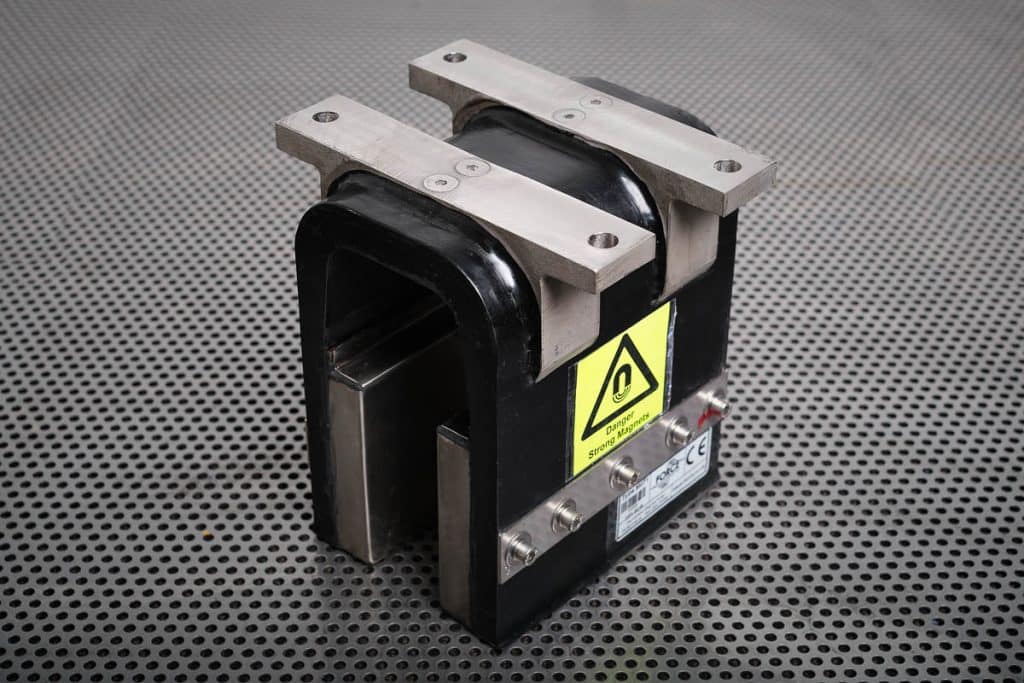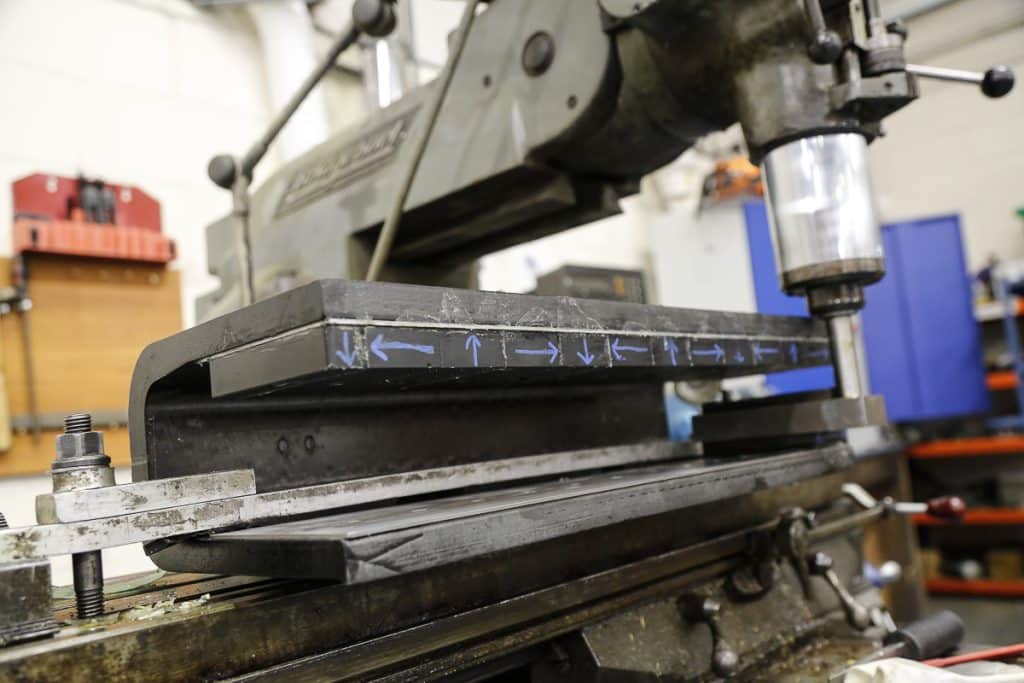Bunting and Force Engineering Design Magnetic Rollercoaster Brake
By Paul Fears | 07 June 2023
Bunting and Force Engineering have collaborated to design and build a novel magnetic brake for use on rollercoasters. During the two-year project, the project team considered different permanent magnet arrangements required to generate the braking force needed to slow and stop a rollercoaster cart. The final design used high-power, low-weight neodymium magnets.

As a leading supplier and designer of magnets and magnetic assemblies, Bunting works with companies from a diverse range of industries. These include audio devices for medical applications, magnet assemblies for sensors, and industrial magnetisers for world-leading automotive companies. Many projects involve design collaboration.
Collaboration with Force Engineering
Force Engineering is a company with a global scope dedicated to the development, design and production of Linear Induction and Synchronous Motors and other electro-magnetic and permanent magnet solutions. Linear motors provide precise and accurate controlled acceleration and deceleration at exceptional rates with efficiency and economy in maintenance costs. Linear Motors are used in a vast array of diverse applications and industries, including rollercoasters. Force Engineering and Bunting had previously worked together on product design projects.
For this project, Force Engineering initially contacted Bunting’s Technical Product Manager, Matthew Swallow, with the aim of developing a novel magnetic brake for their rollercoaster business. The design brief identified a number of key criteria, of which limiting weight was paramount. Rollercoaster track costs approximately £3,000 per meter due, in part, to the pylons and supporting structure. Subsequently, the weight determines the supporting structure design, with lighter systems lowering the overall cost. This also applies to permanent magnet wind turbines, where neodymium iron boron (NdFeB) permanent magnet motors are preferred to motors using ceramic ferrite magnets. Ceramic ferrite magnets are significantly cheaper but heavier, and a lighter-weight motor means a lower-cost support pylon with cost savings outweighing the additional magnet cost.
Designing a Magnetic Rollercoaster Brake
The design project took over two years, with a number of permanent magnet arrangements considered. These included magnetic Halbach arrays, which are a great way of focusing the flux in a specific direction. However, Halbach arrays are difficult to build and need expert handling. Four to five-segment Halbach arrays are the best at focusing the field, but, once again, more segments lead to more material and labour costs.

Using Finite Element Analysis (FEA), the design team determined the most cost-effective magnetic solution that generated the right amount of braking force. The eddy current brake relies on a massive permanent magnetic field between two permanent magnet arrays, with the attraction between these magnets being a key design criterion. Understanding the magnetic force through additional FEA was critical for determining the holding force needed to keep the magnets in place.
A Halbach array is a useful magnetic tool, but it causes adhesive bond lines to be put into a twisting peel effect, producing a form of ‘pull force’ that adhesives do not like. Many iterations of the design looked at bonding the magnets with different coatings to the lightweight carbon fibre structure. However, despite the adhesives’ data sheet specifications stating suitability to survive the environment, none were up to the task when tested in a real-world simulation.
The investigation of alternative methods of magnet retention led the design team to review manufacturing techniques used at one of Bunting’s sister companies in Redditch, UK. Bunting manufactures magnetic separators, including hundreds of plate magnets. These are installed in chutes and over conveyors to capture and hold ferrous metal contamination found in foodstuffs and other dry granular materials.
Bunting’s Redditch engineers joined the design team. In collaboration with the Force Engineering team, Bunting adapted the eddy current brake magnet assembly to incorporate a more comprehensive twist-tolerant design which retained the magnets indefinitely.
Magnetic braking systems such as this feature on many famous rollercoaster rides In the United Kingdom, including Rita at Alton Towers and Stealth at Thorpe Park.
A long-time member of the European Coaster Club said: “Knowing Magnetic Braking systems are on the coaster I am riding makes me feel safer, especially on X-Scream on top of the stratosphere tower in Las Vegas; this is one ride you really want to trust!”
Related Articles
Magnet and Magnet Assembly Design
Bunting designs and manufactures a wide range of magnets and magnetic assemblies. Many are bespoke for specific applications. For further information on any of the products mentioned in this article or for bespoke magnet assemblies and magnet designs, please contact us via:
Phone: +44 (0) 1442 875081
Email: sales.berkhamsted@buntingmagnetics.com
Via Bunting-eMagnets for online purchase of Magnets and Magnetic Technology
Follow us for all our latest news on Social Media


